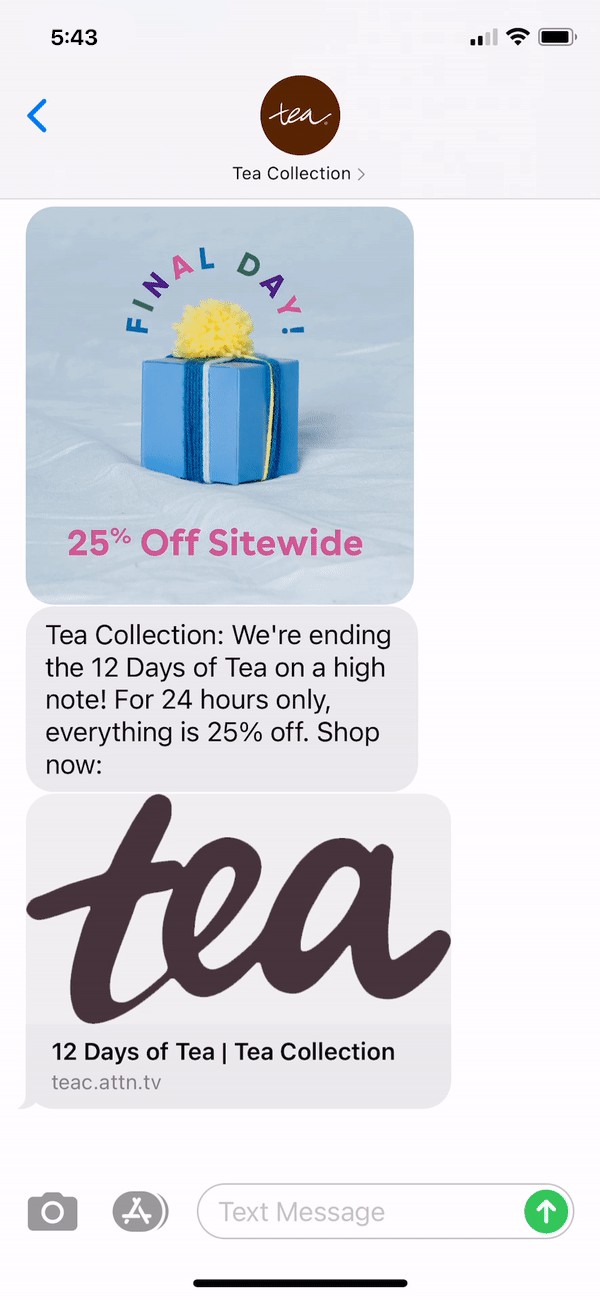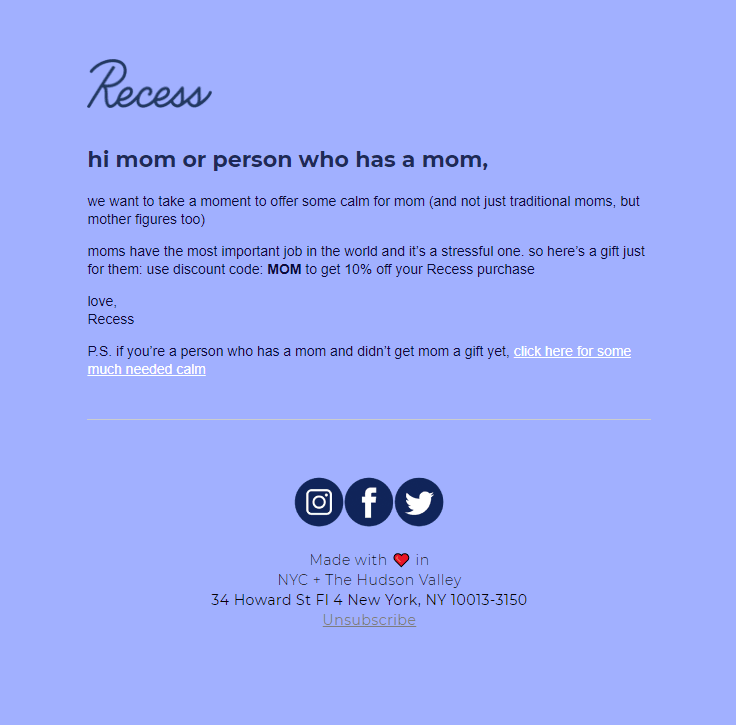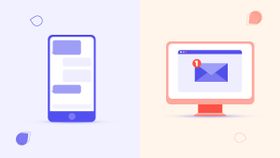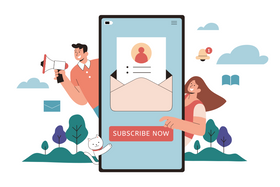[Interview] Chase Dimond on Email Marketing Best Practices for Ecommerce
Chase Dimond talks about email marketing for eCommerce brands, how to optimize email campaigns and flows, segmentation, SMS campaigns, and personalization.
Updated November 5, 2024
![[Interview] Chase Dimond on Email Marketing Best Practices for Ecommerce main image](https://entail.mayple.com/en-assets/mayple/60c5f490beff82198399dabc_1200431107841933Mayple1920x1080LA2_01_9ac8f50249ef125a32e11eb0be9c9df0_2000-1699777188582.png)
Here’s an interview we did with the incredible Chase Dimond, the world-renowned expert on email marketing for eCommerce brands. He founded a marketing agency called Boundless Labs that quickly grew to 7-figures and has a best-selling course on email marketing.
In this jam-packed interview, Chase talks about the top pitfalls that eCommerce brands experience with email marketing, how his brands get deli30% of their sales to come from email, and the best tips and strategies brands should use to absolutely crush it.
Here’s the full video of the interview if you want to listen to it, and the transcript is below.
How did you first start doing email marketing?
“When I was 13 years old, I was diagnosed with what's called Crohn's disease which is an inflammation of your digestive tract. And I was basically sick for an entire year through a lack of awareness of this disease. So from 14 to 16, once I finally started feeling better, I took it upon myself to raise awareness and fundraising for this disease.
At 16, I became the youngest board member of this charity that does about $50 million a year in fundraising. And through that experience of just getting the word out there, in hindsight, I was doing a lot of gorilla marketing, word of mouth, and referral marketing, even though I didn't know it at the time.
I was taking ads out of papers and I was inviting friends to come to walks and they would come one year and have a blast. And the next year they would bring a couple of friends.
So I was doing all this from a really young age. And then on this board as our sort of six-year board term, I was being mentored by presidents of banks and presidents of pharma companies. At the time. I didn't really know what mentorship was, but these people took me under their wing. And I quickly realized that sales and marketing really are some of the most important elements of a brand.
At the end of the day, you can only sell products that you can drive awareness to. And a decent product that is known is much better than a great product that no one knows of. So it did that. And then after college, I started doing a lot of community building through email lists and forums. I was growing communities of 200,000 members to millions of community members largely through cold email and using it as a very nontraditional channel.
I was sending a lot of personalized, outbound, cold emails, inviting people to submit content, to enter into a giveaway, to opt into a newsletter from a landing page, or to join us on Facebook. I spent a couple of years doing that and I got really good at it.
And one of my friends said - ‘why don't you bring the skillsets you have around community building and scaling audiences to eCommerce’. I don't think there are a lot of people doing e-commerce email marketing.
Well, so this was about three, three and a half years ago. I jumped in headfirst and haven't looked back. So today we're at an agency with about 35 full-time employees on the retention side, and we work with about 60 eCommerce brands that do anywhere from seven to nine figures”.
Why is email marketing so important?
“I think email's important for a lot of reasons. First - with the iOS 14 update and cookies going away, it's going to be even more important to control your audience and really have predictable revenue.
The goal is to get to a point where you can press send and you know that this campaign is going to drive you X number of clicks and X number of sales and the revenue per recipient is this.
And with Facebook and some of these other channels, those are obviously very effective for what I do. We are dependent on top-of-the-funnel traffic, but they're going to become a lot less precise, a lot less predictable. So having a channel like email marketing where you own and you control your destiny is going to be super important”.
Why do so many brands get email wrong?
“I think email's not this sexy channel, so it's often ignored. People know they need to do it. It's just not a priority. And when people do it, they often do it wrong. So that way they're not getting the results that they want. And then they're upset.
They'll try like one, two, three things for a few weeks, maybe a month or two, and they won't get the results. So they're like, Oh, this email thing, it's dead. It doesn't work. And I think typically there's a couple of things that brands do wrong”.
1. Brands don’t use popups
“One is - brands don’t use popups. On the team side, people are annoyed with popups. So say I'm a brand owner. And I hate popups. I'm therefore not going to have a popup for people to join my list because I'm controlled by my own internal biases.
And that's actually wrong popups while they can technically be annoying if you do them incorrectly such as when you've shown them a bunch and the offer or the creative are bad. That's when they're annoying.
But if the offer is helpful - whether it’s free shipping, some free content, or a special offer then it works. If it's something that's adding value to your consumers, it's going to also add value to you because you're going to build your email list.
So I think that's one thing is people don't do pop-ups at all, or they don't do them right because of their own internal biases”.
Pro tip: Looking for an email tool that has popup features? Check out our guide to the best email tools for eCommerce.
2. Not enough campaigns per week
“Two - they're not sending enough campaigns per week. And to clarify, a campaign is a one-time send to a group of people, like a holiday blast or some kind of product launch. That's a campaign. Some people call those broadcasts. So people are not sending enough campaigns per week, which means they're leaving money on the table.
So most brands may be sending one campaign a week, two campaigns a week at most. Most of our clients are sending at minimum three campaigns a week. So we're typically sending about three to five campaigns per week.
That's not necessarily to say that one person will receive all three to five emails because we're leveraging what we call segmentation. And it's basically taking a sliver of our list and sending a very specific email campaign to a very specific audience.
Examples of segments can include -
- Customers that bought product A, but not product B
- Men on our list
- Women on our list
- people that are based in the United States versus internationally
Let’s say my brand is based in the US and we're running a free shipping campaign, but internationally, we don't have that same offer just because it's going to be more expensive. So we'll want to segment the list for people that are engaged with our brand in the US and send a free shipping offer with a discount or some kind of free product with it.
So leveraging segmentation and sending enough campaigns per week is where people go wrong. You need to send more campaigns and you need to be hyper-focused on what you're doing”.
3. Brands aren’t using automation enough
“Lastly, I think the big last one and the third one are on the automation side. So on the flow side, think about a welcome series for non-buyers that have abandoned their cart, or some kind of post-purchase campaign. Brands set it and forget it.
Again, these are going to work for you. They're going to send automatically, but it's not set, and forget it. You have to be testing. You have to be optimizing and you have to be looking at the data to make the improvements.
Those three reasons are where people go wrong and because they go wrong there, they throw in the towel too early. And these brands have a 1% of their revenue coming from email. It's a massive missed opportunity. Most of our clients are doing 20%, 25%, 30% of their revenue online from email. So it's very significant.
So for a million-dollar brand, they should hopefully be doing $200,000, $250,000, $300,000 in email sales a year. And your email revenue is going to be your most profitable revenue. It's people that are on your list that you're going to be able to convert”.
What’s the difference between flows and campaigns and how to use them?
Rakefet: “How do you see the differences between flows and campaigns? Sometimes a brand may have set up some kind of basic flows. But then they don't really know how to handle campaigns, as you said, in terms of frequency and what type of campaigns and how to personalize those campaigns to build the right funnels. How do you manage both and what are the results you can expect from each?”
Chase: “I think they're both crucial. They really are responsible for driving people to one another more so on the campaign side. So what I mean by that, let's say you have a list of a thousand people that we're going to send to.
A lot of them are going to open, a percentage of them are going to click and out of the people that click, they're going to look at your collection page or your product page, your home page, wherever you're sending them.
A percentage of those people are actually going to view a product and a percentage of those people are going to actually add to the cart. A percentage of the people are going to start to check out, and a percentage are going to buy.
So the more campaigns that we send, the more people that we send to our website, that's when the flows kick in. So if someone goes to our website, they view a product they add to the cart, and then they'll start the checkout. If they don't buy then it will trigger the abandoned checkout.
So campaigns and flows are really symbiotic and how they work, and you do need both”.
What are the best ways to use email flows?
“When eCommerce brand owners and marketers are just starting out, it's a lot to take in. So do it step by step. There are dozens of automations that you can set up so focus on just these few first.
The three most important email flows are:
1. The welcome series for a non-buyer / new subscriber
That's for people that are entering their email to a popup typically for some kind of incentive or offer. So in the email make sure you say - ‘Hey, welcome. Here's the offer. Here's a little bit of info about us’.
Make it all about the quality of your brand, the brand standards, how you're different, what's in it for them, and what they can expect. So that's the welcome series for non-buyers. People expect it and it's also very important for setting up the relationship. Here’s an example from one of the brands that I work with:
2. The abandoned checkout flow
Then there's the abandoned checkout, which is actually different than the abandoned cart email. The abandoned checkout is for two groups of people: either people are already on your list or if they got on your list by completing some portion of the checkout such as filling out their name, phone number, address, or email.
So that's a really important one because people are so close to buying. They're literally your most engaged sliver of people outside the people that have purchased from you.
They maybe got distracted or maybe you don't have free shipping. Maybe they want to just see if you're going to send them some kind of offer with an email. So the abandoned checkout is crucial for taking people from considering your product into actually getting them to convert.
3. The post-purchase flow
And then the last one is the post-purchase flow. The relationship does not stop when someone buys from you. That's actually when you can go one step further and express your gratitude and your thankfulness for what that purchase means to you and your team.
You want to speak to people that are first-time buyers versus repeat buyers in a little bit of a different manner. So those are the first three automations that I would start with.
How do you Optimize Your Email Marketing Campaigns?
At the very least start with one campaign a week, and look at the following metrics:
- open rates
- click through rates (CTR)
- conversions
- marked as spam rate
- bounce rate
- unsubscribe rate
If all those metrics are in line with the industry standard on your first campaign then send out a second campaign.
Monitor all those engagement metrics, both on the positive side - the open rate, the clicks, the conversions, and the negative - the marked as spam, the bounce rate, and the unsubscribe rate. If all those metrics look good then send the third campaign per week.
Keep incrementing up until you find that equilibrium of maximizing revenue and engagement and minimizing churn. If you get to the point where you’re sending a daily email and your open rates have tanked and people are unsubscribing or marking your emails as spam, then you know that you're sending too many.
Here are some ideas for the content of your email campaigns:
- holidays
- current events
- new product launches
- celebrity or influencer partnerships
- any kind of social proof (reviews, UGC)
Those are some buckets that you should hit.
If you look at your campaign calendar on a two-week or a four-week basis, you can make sure that you're not sending just promotional emails back-to-back and that you're mixing in a hybrid of sales and educational emails with tons of social proof. So that you're keeping people interested and engaged with your brand.
- Can you educate them?
- Can you convince them?
- Can you build trust?
These are all really important things to consider when creating your email campaigns.
And then in terms of revenue, it depends on how frequently you're sending your emails. It depends on your list size. We work with some brands that have 1 million, 5 million, 10 million people on their lists. So they're heavily weighted towards campaign revenue (rather than flow revenue) just because the list is so big and they're sending so frequently.
However, a smaller brand that's sending an email campaign three times a week with, 10,000, 25,000, 50,000 subscribers. can expect a one-to-one ratio or a somewhat equal revenue from email campaigns and email flows (automation)”.
Text Messages (SMS) are a must for any Email Marketing Funnel
“I definitely think SMS is a great channel. I think there's definitely a time and place. If you were just getting now into retention and you're looking at email and SMS marketing, it's probably going to be difficult for you to take on both at one time.
You can get away with sending 3-5 emails per week to someone. But you can't send 3-5 texts per week. If you're not someone's friend or family, they're going to get rid of you pretty quickly.
If you're thinking about the two, start with email first. This is probably what most people will want initially. And then as you have a good pace with email, as you have your systems, processes, and baseline in place, then layer in SMS.
what we're finding is that SMS really is a channel for people that want to be your VIP. These are the people that want to get info about your new product launches first. These are the people that want to know what's happening in your world first.
So SMS, in our opinion, not that it's not for everyday people, but it's really for the people that are the brand loyalists and the VIP’s.
Another advantage of email marketing is that it helps you figure out:
- who are the VIPs?
- How do we increase the AOV?
- How do we increase repeat purchases?
The answers to these questions better prepare you to launch your text message (SMS) campaigns. So I think email comes first, SMS second”.
What’s the biggest impact of Email Marketing on Ecommerce Brands?
“The power of email is that it's basically taking someone and allowing them to make the first purchase. When someone's considering your brand, they need a lot of touchpoints. They need to see that ad for you, they need to get that text from you. They need that email from you. They need to see your posts on social media.
I think the data always changes, but people need 7-10 interactions with your brand to feel like they can trust you. That’s for most D2C brands. For bigger brands like Gymshark, there's already so much clout and social proof there that maybe they could get away with fewer touchpoints, just because there's so much credibility.
The average brand that we work with $1M, $5M, $10M, $20M in annual revenue, has people that are discovering them through influencers or other top-of-the-funnel campaigns.
They need those multiple touchpoints and email allows you to build that trust and get those touchpoints in a way that's sometimes salesy, sometimes educational, and sometimes both. So it really allows you to show multiple colors”.
Email is a super intimate channel
“The thing that I love about email is it's very intimate.
And let me explain what I mean.
If you’re scrolling on Facebook there’s typically a post from your mom, your dad, your husband, your wife, your ex-boyfriend, your girlfriend, or your colleague. And then there's an ad squeezed in, right?
Those ads are effective, don't get me wrong. But with email, if I can get you to open my email, it's just me and you. I have your attention for one second, for 30 seconds, for a minute, depending on how great my design, copy, and call to action are.
So I think email is a really intimate channel.
That being said, like, I think all these channels are important, right? I think you need the diversity of channels to drive this AOV, the repeat purchase of first-time buyers. Whereas before I think maybe three years ago, you could get away scaling a brand solely off of Facebook and Instagram. It was cheaper and more predictable.
So now, in 2022, email and SMS and all these things are so crucial for driving down your cost of acquisition (COA). You can acquire a customer on top of the funnel and you can get them to buy multiple times and the LTV and the re-repayment of that acquisition is going to be a lot cheaper than it would be otherwise.
And at the end of the day, I think the word that sums it up is you're driving an experience. How can someone experience your brand? Email is a great channel because you can include things like GIFs, interactive elements, you can have really cool fonts and colors.
There are a lot of really cool brands that use email really well. One brand I like is called Recess. They do a really cool job with our emails.
There’s another brand called Chubbies. They're really entertaining and funny with their emails. Some of these companies are kind of polarizing in the sense that it's really obvious whether you're in their target demographic or you're not.
I think that polarization and that affinity towards the brand is what makes these relationships really strong.
So email needs to be an extension of your website, an extension of your social media. It needs to be something that you take seriously and it needs to be polished. You see all this time with people have beautiful websites and their socials highly curated. And then their email looks like it was stick figures.
I think email is a really crucial channel to drive that experience and build that personal relationship because you know exactly who someone is on social for a long time. You used to know exactly who someone was. And to some degree you still do, but with all the stuff that's happening with iOS 14, if people opt out of abstracting them, it doesn't mean they're not going to see ads. It just means the ads that they're going to see are going to be a lot less relevant.
With email, you know the things they're viewing and other things they're clicking, and how much time they spend on your website. You know the items that they've ordered, you have this central data hub and this source that you control and own, and no one could take it from you”.
What’s your biggest tip for eCommerce brands doing email marketing?
“I think the biggest tip is to just start.
We work with about 50-60 clients right now. I see 5-10 brand accounts a week. And the number of brands that are just starting is pretty overwhelming. Just start something is better than nothing and you will figure it out as you go.
If you want to work with an email marketer in-house, or a freelancer, or even an agency, they need some sense of data to figure out what is happening.
So if you don't even have anything going, if you haven't sent a campaign, if you don't have a flow in place, it's going to take much longer for someone to come in and help you optimize it.
Set it up, get the initial things out of the way, get something going, and collect emails.
It doesn't have to be perfect. It's not going to be perfect out of the gate, but something is better than nothing. And you'll learn really quickly. The best way to actually learn is to try”.









